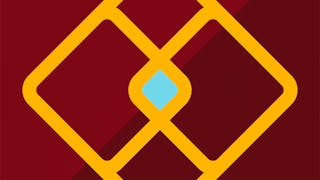Discover how you can use acupressure to support symptom relief and wellbeing. In this course, you will learn how acupressure, which is a time-honored healing technique rooted in East Asian Medicine, can become a practical, effective tool in your clinical practice and self-care strategies. Acupressure Essentials is a self-paced, experiential course designed to teach basic principles and applications for symptom management including pressure points for pain, headaches, gastrointestinal disturbances, and wellbeing. By the end of the course, you will be able to demonstrate acupoint protocols, demonstrate an acupressure treatment session, and determine a plan of action for incorporating acupressure into your professional practice and self-care routines.


Acupressure Essentials: Pressure Point Techniques for Symptom Management and Self-Care
This course is part of Integrative Nursing Specialization


Instructors: Megan Voss
5,851 already enrolled
Included with
(40 reviews)
Recommended experience
What you'll learn
Basic concepts of East Asian Medicine (EAM)
Clinical indications for acupressure and the evidence base for its use in symptom management
Acupressure protocols for pain management, gastrointestinal disturbances (constipation, diarrhea, nausea), and wellbeing (anxiety, insomnia, fatigue)
Strategies for incorporating acupressure into your professional practice and self-care routines
Skills you'll gain
Details to know

Add to your LinkedIn profile
See how employees at top companies are mastering in-demand skills

Build your subject-matter expertise
- Learn new concepts from industry experts
- Gain a foundational understanding of a subject or tool
- Develop job-relevant skills with hands-on projects
- Earn a shareable career certificate

There are 4 modules in this course
The first module is Clinical Acupressure Fundamentals. Our goal is to establish a context you can use to incorporate acupressure into clinical patient care. We’ll review basic concepts of East Asian Medicine (EAM), discuss the mechanism of action for acupressure and the state of the research evidence base for acupoint therapies, and start exploring strategies for adding acupressure to your professional practice. You’ll also get a chance to begin practicing some basic acupressure techniques.
What's included
24 videos9 readings2 assignments1 discussion prompt
This week, we are focusing on acupressure for pain. You’ll learn acupoints and protocols for managing headache, jaw, sinus, neck, shoulder, back, and abdominal pain. Illustrated guides and tutorial videos will give you step-by-step instructions that you can follow at your own pace. Use your judgment to identify the most relevant pieces for your patients and apply them to the life that you're already living and in the practice that you already have.
What's included
21 videos4 readings1 assignment1 discussion prompt
In this module our hands-on exploration of acupressure continues. We’ll shift our focus to acupoints and protocols for gastrointestinal disturbances (constipation, diarrhea, and nausea/dyspepsia) and wellbeing (anxiety, depressed mood, insomnia, and fatigue). In addition to the protocols you are learning, targeted massage is another way to introduce acupressure into your practice. Megan demonstrates a few clinical scenarios where she uses massage to stimulate multiple relaxation-promoting acupoints on a patient in the space of 5-15 minutes.
What's included
12 videos7 readings2 assignments1 peer review1 discussion prompt
Your goal this week is to create a plan of action for incorporating acupressure into your professional practice and self-care routines. Guided activities will help you identify your next steps. You’ll also hear a variety of clinicians speak about their successes and challenges in using acupressure with patients.
What's included
14 videos5 readings1 assignment1 discussion prompt
Earn a career certificate
Add this credential to your LinkedIn profile, resume, or CV. Share it on social media and in your performance review.
Instructors

Offered by
Explore more from Patient Care
 Status: Preview
Status: PreviewThe Chinese University of Hong Kong
 Status: Free Trial
Status: Free TrialUniversity of Minnesota
 Status: Free Trial
Status: Free TrialMedCerts
 Status: Preview
Status: Preview
Why people choose Coursera for their career




Learner reviews
40 reviews
- 5 stars
80.48%
- 4 stars
17.07%
- 3 stars
2.43%
- 2 stars
0%
- 1 star
0%
Showing 3 of 40
Reviewed on Jun 15, 2023
It was a very valuable course and I am very grateful to you. I learned very practical lessons that I can use in my work and I know that I will get the best results.
Reviewed on Jun 14, 2022
Great information and I can't wait to use it in my practice as an integrative nurse!
Reviewed on Apr 27, 2023
This course was delivered very well however the audio of the videos could be better and the subtitles aren't very accurate.

Open new doors with Coursera Plus
Unlimited access to 10,000+ world-class courses, hands-on projects, and job-ready certificate programs - all included in your subscription
Advance your career with an online degree
Earn a degree from world-class universities - 100% online
Join over 3,400 global companies that choose Coursera for Business
Upskill your employees to excel in the digital economy
Frequently asked questions
Acupuncture and acupressure utilize the same system of points developed in East Asian Medicine. Only licensed acupuncturists can perform acupuncture, however, in this course, you’ll learn how to stimulate the same therapeutic points utilized by acupuncturists without the use of needles or other devices that require specialized training. Acupressure is a safe and effective alternative to acupuncture that can be used as part of a self-care routine. Some massage techniques that are designed to be simple yet intentional in stimulating multiple acupressure points will be demonstrated to maximize the therapeutic benefit of acupressure.
This course will demonstrate pressure point protocols for common types of pain including managing headache, jaw, sinus, neck, shoulder, back, and abdominal pain. The course will also explore protocols for managing gastrointestinal disturbances (constipation, diarrhea, and nausea/dyspepsia) and wellbeing (anxiety, depressed mood, insomnia, and fatigue) .
Yes, the course includes expertly illustrated images that clearly demonstrate how to locate acupressure points. The course also includes engaging videos that will show you how to locate each point even if you have very little knowledge of human anatomy.
More questions
Financial aid available,
¹ Some assignments in this course are AI-graded. For these assignments, your data will be used in accordance with Coursera's Privacy Notice.

